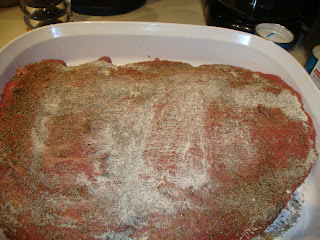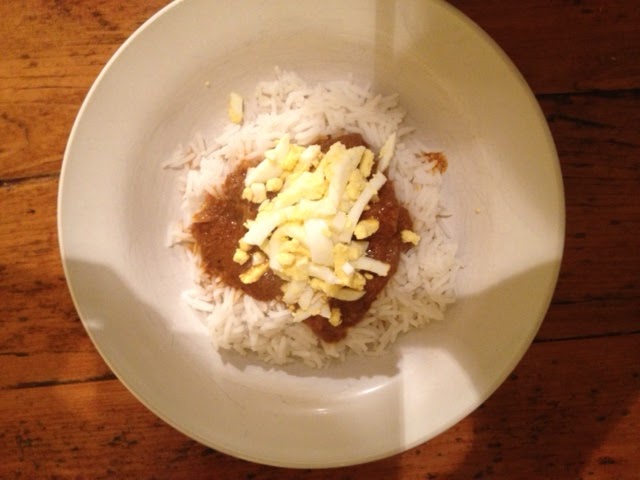If you haven't had the opportunity to read any of the stories (or the opportunity to watch the amazing tv movie series...seriously....so good and very true to the books), here is a little information about Mr. "Haitch", as he is sometimes called. As you can imagine, most of the food discussed in this series is awful and is usually spoiled food that a seaman has to endure throughout his time on the high seas. So I'm certainly not going to talk about biscuits with weevils in them...disgusting. This is about Hornblower's story in Mr. Midshipman Hornblower, where he travelled to the Bay of Oran to resupply his ship, and then encountered the Black Plague (are you looking for the weevils now?). He sails to the coastal town to retrieve the food supplies and heads back to his ship, but since he and the men have been exposed to the Black Plague they are quarantined on the small supply ship, the Caroline, for three weeks. Now the good news. The supply ship was packed with cattle. A pytain to clean up afterward, but delicious to eat. And the generous Hornblower allows the men to slaughter one cattle for their consumption. His theory...if they are going to die, might as well be happy and have a full belly.
So here lies my inspiration for this blog. Beef. What the men on the Caroline ate was most likely boiled meat, but I am going to pretend that it was even more of a celebration. And how better to celebrate then with a wonderful roast. Now roast could mean a whole world of different things. The roast I am going to feature is beef brisket...a humble cut of meat (which has now become increasing popular)...but one that my mother has perfected. Its so good that family members have been known to do "brisket au jus shots". It is exactly what you think it is...
A brisket is the cut of meat from the breast or the lower chest of beef (or veal), beneath the first five ribs and includes the deep pectorals which must be tenderized. Brisket can be cooked in many ways. Basting of the meat is often done during the long cooking process. This normally tough cut of meat (due to the collagen fibers that make up the significant connective tissue in the cut) is tenderized when the collagen is gelatinized (really....that's a silly word) which results in a more tender brisket. The fat cap which is often left attached to the brisket helps to keep the meat from drying during the prolonged cooking that is necessary to tenderize the meat. In stores, you will find that the long piece of meat is cut into two different parts...one that is a flat cut and one that is a point cut. The flat cut is leaner, but the point cut has more flavour due to a bit of extra fat (which is called the deckel). There are many different ways to cook brisket, but all of which are low and sloooow.
I hope you enjoy my mother's recipe. And seriously...don't forget the aus jus or the horseradish!
Brisket Recipe
Ingredients:
- 1 beef brisket point (4 to 5lbs/2 to 3.5 kg)
- 1 tbsp garlic powder
- 1 tbsp onion powder
- 1 tbsp celery seed
- 1 tsp freshly ground pepper
- 1 1/2 tsp Knorr Aromat Seasoning
- 1 bay leaf
- 1 tsp thyme
- 1 tbsp dry parsley flakes
- 1 cup beef broth
- 1 tbsp Kitchen Bouquet
- 1 tbsp Worcestershire sauce
Preparation:
Wipe beef with damp cloth and pat dry.
Mix together garlic powder, onion powder, celery seed, pepper and Knorr Aromat. Rub meat all over with spice mixture. Place in shallow roasting pan.
Mix together bay leaf, thyme, parsley, beef broth, Kitchen Bouquet and Worcestershire sauce. Pour over brisket.
Cover pan with foil wrap and perforate in a few places to let steam escape. Place in 325F oven and cook 2 to 2 1/2 hours or until tender, about 30 minutes per pound. About 30 minutes before the brisket is done, remove foil and all brisket to brown.
Remove brisket from pan and keep warm. Let rest 10 to 15 minutes before slicing.
Drain off excess fat from pan drippings. Heat and serve with meat.
באָן אַפּפּעטיט
bʼán ʼaṗṗʻtyt
!P.S. Mom, Thanks for the photos
!P.S. Mom, Thanks for the photos









